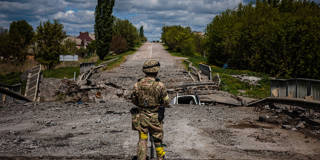
Why the War Will Continue
The map of Ukraine a year from now will most likely resemble nothing so much as the map as it appears today. The year ahead promises to be dismal, not decisive – more reminiscent of World War I than of World War II.

The map of Ukraine a year from now will most likely resemble nothing so much as the map as it appears today. The year ahead promises to be dismal, not decisive – more reminiscent of World War I than of World War II.
MUNICH – In the year since Russia launched its full-scale invasion of Ukraine, the war has evolved in ways few predicted. The conventional wisdom was that Russian forces would quickly overwhelm the overmatched Ukrainians and take possession of much more of the country than they gained in 2014. Others went further, predicting that Russia would topple the government in Kyiv and replace it with a puppet regime that would ratify Russian control and no longer embody a Western-looking alternative to the bleakness that has become Vladimir Putin’s Russia.